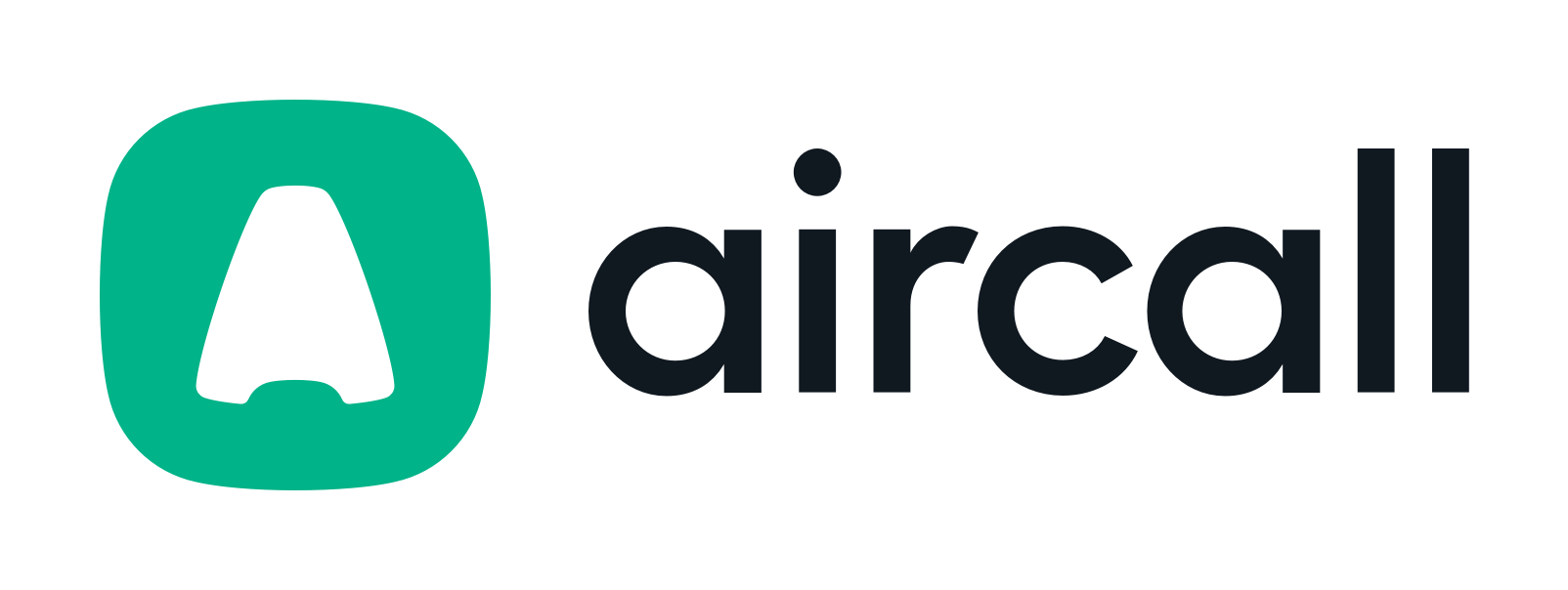
What’s one of the most essential things in sales? It’s your list.
Building it means collecting and organizing a database of prospects to contact. Some will close soon, and others may even further down the line. But one thing is for sure: a focused B2B list is vital for bringing in revenue.
A good list lets you contact decision-makers and all the other stakeholders you need. So,t how do you build one?
This guide explains how to build a B2B list from the beginning, and we’ll review some tools that make it easy. ⤵️
What is B2B list building?
You need contact details to contact people.
Well, duh!
Enter the contact list. B2B list-building is compiling a list of people you’d like to contact through sales or marketing activities. This list typically has:
- Contact (first and last names).
- Job title.
- Company names.
- Emails, phone numbers, and more.
List building as a prospecting activity
Constructing a B2B list is a critical step within the sales cycle. Here’s how list-building sits within the sales funnel:
- Awareness - Creating a B2B list lets you identify potential clients within your ideal customer profile (ICP). It enables targeted outreach and more effective marketing strategies.
- Consideration - With a list of leads, businesses send valuable information that matches their needs. Your list should, above all, be relevant. Sales reps need to know the sales triggers that highlight it, and it might be a good time to reach out.
- Decision - A well-kept list results in more sales as you reach out to only the most relevant people. Some may be closer to buying than others, and that’s okay. Remember, outbound sales is about building relationships.

Types of leads
There are plenty of different types of leads. How warm they are will depend on their stage in Chet Holmes’ buyers’ pyramid. The people buying right now are only the top 3%. So, as an SDR, most people on your list won’t be in the market to buy right now.
- Cold leads are people who have never interacted with your brand. They might be problem-aware, they might even be solution-aware (possibly even aware of your brand). But they aren’t in the market to buy right now.
- Warm leads are interested. They may be newsletter subscribers, webinar attendees, or website visitors. These people are aware of your brand.
- Nurtured leads are those that, over time, have had an active relationship with you. This might’ve been over email, phone calls, or specific ads. Maybe they even had a demo way back when.
A good rep knows how to contact each lead type, especially icy cold ones. Activities like lead scoring can help determine the best time to reach out.
How to create a B2B list
Building a strong B2B list helps connect with the right people and grow conversion rates. Here are some leading strategies for making a top-quality B2B contact list.
1. Use a tool
Sales prospecting software such as Kaspr simplifies building a prospecting list by taking contact details from LinkedIn and Sales Navigator. Kaspr lets you access all the necessary information about possible leads with just a few clicks.
You can use it on Sales Navigator, too. Kaspr empowers users to use the advanced search filters on Sales Nav and LinkedIn to build a list of contacts and get their contact details to sync back with their CRM.
/%5BPMM%202%5D%20-%20Boost%20pipeline/LinkedIn%20bulk%20enrich%20automation%201%20(EN).webp?width=800&height=517&name=LinkedIn%20bulk%20enrich%20automation%201%20(EN).webp)
Data enrichment for lists works in three different ways in Kaspr:
- Using the Chrome Extension - Use it as part of your prospecting flow on LinkedIn or Sales Navigator.
- Workflows - Bulk enriches contacts with workflows that automatically get you phone numbers and email addresses.
- CSV bulk upload - Upload a list of contacts to the Kaspr dashboard to get contact details added.
You can sign up for Kaspr free (no credit card needed) to access contact details from your B2B list. Enter your work email below. ⤵️
2. Sales Navigator
LinkedIn’s Sales Navigator supports the construction of B2B lists. It helps locate prospects using industry, company size, or job title filters.
Use Sales Navigator’s “Lead Lists” to arrange prospects and follow up. Use alerts for prospect actions, like job changes, and offer a chance to contact them.
👉 Is Sales Navigator worth it?
3. Networking and partnerships
Networking provides a chance to collect contact information from important people face-to-face. Forming partnerships with other companies helps to find new leads. Collaborating with businesses offering related products or services helps exchange potential customer lists.
Follow up after events or when partnerships start. Personalize your message to create a more authentic connection. For example, you could ask what the highlights of an event the prospect recently attended were.
4. Social media activity (LinkedIn)
B2B social media engagement growth continues with LinkedIn. When reaching your target audience, you first share appropriate content through posts and comments or send direct messages.
Don’t stop there; target their posts, too. Alan Ruchtein, Sales Advisor, talked us through his trigger-led cadence. He’s generated 100s of leads using this approach by finding creators on LinkedIn that people in your ICP follow, finding people in the comments and then reaching out to them with a sequence relevant to the post content they liked.
5. Search for your closed-lost opportunities
Closed-lost opportunities are leads who expressed interest in your product in the past but chose not to buy. Maybe a competitor just pipped you to the post. But just because they didn’t convert then doesn’t mean they will never. Keep these people close.
Some lost deals in your CRM could be revived.
Jack Neicho, Account Executive, proves this with his 300-day sequence designed for past prospects. He revives previously lost opportunities by layering strategic touch points across email, LinkedIn, and calls.
His winning move?
Watching for trigger events like job changes. When he spots a new CRO joining a target account, he leverages senior leadership team connections for warm introductions rather than direct outreach. This approach has helped him successfully resurrect opportunities that initially slipped to competitors.
Watch his explanation in the video below, fast forward to 05:00. ⏩
6. Data enrichment
Data enrichment is the process of augmenting your leads with information that you already have. By enriching your contact data, you can better understand each lead.
For instance, try integrating basic pieces of data, such as emails, with new ones! This includes social media accounts or databases like Kaspr.
/%5BPMM%204%5D%20-%20Kaspr%20fits%20seamlessly%20into%20your%20tech%20stack/Workflow%20enrichment%201%20(EN).webp?width=3200&height=1600&name=Workflow%20enrichment%201%20(EN).webp)
👉 You can try Kaspr’s high-quality data by signing up.
7. Optimize your website
Think about leads who are already engaging with your business. Your website should be an asset, allowing you to capture their contact details. Use lead capture tools like lead focus contact forms, whitepapers, or newsletter signups.
Ensure that any user-generated content can be featured on your website in exchange for contact details. Even free materials such as eBooks or case studies increase lead generation five-fold.
8. Create content
Do you want your website users to be willing to post their contact information in exchange for further communication?
Try creating blogs, white papers, or case studies.
The regular publication of content places you in the eyes of the clients and leads you as an expert in the field. Post what you know on LinkedIn.
9. Look at sales triggers and intent
Expanding a company or launching a new product can help determine when a potential buyer is ready to purchase. Use Google Alerts or target sales triggers with tools like Bombora.
If you have a lead with intent, mention the selling trigger whenever you contact them to encourage relevance and urgency.
Here’s an example of a trigger-led message. ⤵️

10. Run webinars
By running webinars, you offer attendees a valuable service and contact information.
Promote your webinars on social media, email campaigns, and your website. After the webinar, follow up with personalized emails referencing the topics discussed.
Tools for B2B list building
To perform effective B2B list building, you need proper tools to smooth the process and help manage leads. Among those tools that can assist you in building and managing your B2B lists are:
1. Kaspr
/%5BPMM%202%5D%20-%20Boost%20pipeline/LinkedIn%20Chrome%20Extension%20UK%201%20(EN).webp?width=700&height=420&name=LinkedIn%20Chrome%20Extension%20UK%201%20(EN).webp)
Kaspr is a tool that uses LinkedIn to generate leads through various methods. It sources emails and direct dial numbers, among other contact info found on LinkedIn. Kaspr allows you to create and export lists to your CRM, eliminating the need to enter the data into your system manually.
Sign up for Kaspr now - test the data first-hand. 👇
Key benefits:
- There is no need to go through the data insertion process because of automatic integration with CRMs like HubSpot and Salesforce.
- Acquisition of new data in real-time.
- LinkedIn automation for capturing leads with minimal effort.
2. Cognism

Cognism has data that complies with GDPR data protection laws. It has European contacts who are ready to buy. You can use Cognism to build lists, calculate your TAM, and know when your prospects are ready to buy through intent data.
Key benefits:
- High-quality cell phone numbers.
- Best practices for data compliance focused on European business.
- Trained marketing reps familiar with European regulations who send qualified leads.
3. HubSpot

(Source: HubSpot)
HubSpot has functional lead management capabilities, including monitoring contacts, list creation, and classification.
Key Benefits:
- Use the CRM for free.
- In-built outreach on the platform: Contact your lead list.
- Lifecycle stages allow you to see the lead’s journey.
Best practices for list management
Targeting B2B lists is the core activity that, if done correctly, can ensure the success of your sales. A well-maintained list leads to better engagement and higher conversion rates. Here are the essential practices for managing your B2B email lists effectively.
Consistent maintenance of the contact list
Fundamental to successful B2B marketing and sales. The market is dynamic and constantly changing, so schedule monthly or quarterly checks to keep your data fresh. During these reviews, remove bounced email addresses and update job descriptions and contact details to maintain accuracy. It helps eliminate irrelevant contacts and keeps your database current.
Strategic list segmentation
Essential for more targeted and effective communication with your audience.
Instead of sending the same content to everyone, divide your contacts based on their business sector, organization size, and job roles or designations. This targeted approach leads to more relevant communications and better response rates.
Data protection compliance
Non-negotiable in modern B2B marketing.
Compliance with regulations like GDPR and CCPA isn’t just about avoiding penalties—it’s about building trust with your contacts. Always secure written authorization before adding new contacts, provide clear unsubscribe options, and maintain secure databases for all personal information. These practices protect your reputation and your relationships with potential clients.
Regular list cleaning and verification
It is crucial for maintaining your sender’s reputation and maximizing campaign ROI.
Make cleaning your database routine by removing duplicates and incorrect records. Take extra precautions with addresses associated with spam complaints, and reach out to long-term contacts to confirm their continued interest in your communications.
This proactive approach helps maintain list quality and ensures that your B2B marketing strategies reach engaged, interested potential clients.
Common challenges in B2B list building
B2B sales is hard. Here are a few common problems businesses encounter and their solutions:
Low engagement rates
Most companies experience low open and click rates in their email campaigns. This could be due to bad list data or irrelevant messaging. Try segmenting your lists based on industry, job function, or past interactions.
Data quality
Wrong or invalid contact information can significantly hinder your outreach strategy. Inefficient data results in resource waste and missed opportunities. Scrub your lists by removing identical and validated contact records.
➡️ Use B2B lead finders like Kaspr or Cognism to ensure your lists are correct and current.
Compliance issues
Dealing with data protection regulations can be a headache. Make sure that you can prove you have proper consent mechanisms and assess your data practices. This will ensure that your list is compliant with all relevant legislation, such as GDPR and CCPA.
Wrapping it up
B2B list building is essential for the success of any sales or marketing efforts. It provides the foundation for focused campaigns and engagement. Companies can contact potential customers with a proper email list, driving conversions and increasing revenue.
Investing in proper list building and using tools like Kaspr can boost your outreach and sales efforts. Don’t wait! Check out Kaspr’s quality data today. ⤵️
Accurate European contact data
Get accurate data for your prospects and connect with your favorite sales tool







